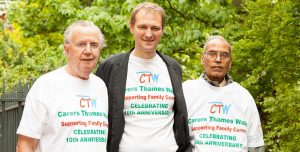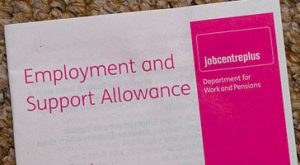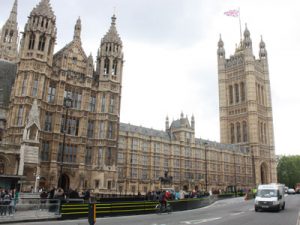Latest News
Surrey Cricket Foundation Disability Day
Attendees will enjoy a full day filled with games, coaching and the chance to see the unprecedented treble winners of 2016, the Surrey VI cricket team playing on the famous outfield.
Activities include:
- Batting, Bowling and Fielding skill challenges on the outfield of the Kia Oval
- A chance to try your hand at VI cricket watch the Surrey VI team against a representative team from the England & Wales blind cricket side
- Chance to meet CCC players
- Take on Cricket Factory challenges
- Tours of the historic Kia Oval
- Take part in a variety of multi inclusive activities around the ground and in the KBC
To book your place please contact Gavin Reynolds on 07725 203 962 or email [email protected]
Venue
Surrey County Cricket Ground, The Kia Oval, Harleyford St, Kennington, London SE11 5SS
view map

Carers Thames Walk 2017
Setting off from Southwark Cathedral our team of walkers set off down the Thames Path. The walk took in many famous landmarks including Tower Bridge, the Houses of Parliament, The Seven Dials, HMS Belfast and many many more places of interest.
There were representatives from over 15 carers centres completing the walk, Dorah Nairobi, Lilian Silva and Yvonne Najair Bellinfante all took part and have been raising funds for the charity.
If you would like to make a donation to say thanks and mark their achievements you can make a donation directly to us by a bank transfer.
- Account name: Southwark Carers
- Account number:Â 50075221
- Sort Code:Â 08-90-29
Please use the reference Thames Walk in order for us to be able to ensure any monies donated is used for carers activities going forward.

State of Caring 2017
Through the evidence they gather from the State of Caring survey they can push for change. In the biggest survey of its kind of carers in the UK, the data they collect paints a real picture of the life carers lead.
Carers UKÂ use the responses to provide evidence to policy makers.
Please take 20 minutes to complete the survey and help shape the future for carers

Charity warns that abolition of Wor-Related Activity Component of Employment and Support Allowance will be barrier to employment
Before this change, the Work-Related Activity Component was an extra amount that was paid to ESA claimants placed in the Work-Related Activity Group after their Work Capability Assessment. ESA claimants must undergo a Work Capability Assessment which decides whether they are in the Work-Related Activity Group requiring them to undertake ‘work-related activity’ or the Support Group with no requirements to undertake ‘work-related activity’, or if they are ‘Fit for Work’ which will end their ESA claim.
As of August 2016, there were just under 2,385,090 ESA claimants in Great Britain, including 429,073 in the Work-Related Activity Group.
Successful ESA claimants receive a standard weekly amount a week, plus either money for claimants in the Support Group or, and prior to this month’s abolition of the Work-Related Activity Component, money for claimants in the Work-Related Activity Group.
Turn2us says that the money for claimants in the Work-Related Activity Group was important for giving those with an illness or disability support to undertake Work Related Activity, such as skills training that will help them find employment, which in turn also helps prevent claimants from being sanctioned.
Emphasising the importance of this additional money to someone receiving ESA, Alison Taylor, Director of Turn2us Operations, said:
“People with an illness or disability who are trying to find employment face extra barriers. There can be additional transport costs to attend training or an interview. We are therefore very concerned that people in this situation will now face these extra barriers to finding employment without the support that helps them overcome these barriers.â€
While Kelly-Marie Jones, Welfare Benefits Specialist at Turn2us, added:
“The purpose of ESA is to support people whose ability to work is limited by their illness or disability and to get them into a better position to start working again. We know that being ill or disabled incurs extra costs, be they related to improving health like higher food or heating costs, or overcoming barriers, for example additional transport costs for getting to training or interviews.
“It is difficult to see how cutting the financial support that helps address these issues will help ESA claimants improve their health and their ability to work. It is concerning that people in this situation will now face these extra barriers to finding employment without the support that helps to overcome them.â€
Turn2us has also emphasised the importance of anyone struggling with accessing benefits to seek its help at Turn2us.org.uk. It says that it can help people understand and access what they are entitled to.

Disabled people ‘left behind in society’, report finds
The study by the Equality and Human Rights Commission said progress towards equality in the past 20 years was “littered with missed opportunities.”
Chantal Chaervey, from Suffolk, said she was left “almost destitute” by the costs of caring for her disabled son.
The government said it spends about £50bn a year to support disabled people.
Pay gap
The report, “Being disabled in Britain: A journey less equal”, covers six “key areas” – education, work, standard of living, health and care, justice and detention, and participation and identity.
It found that disabled people in the UK were experiencing disadvantages in all of them.
The report found a lack of equal opportunities in education and employment and barriers to access to transport, health services and housing.
It highlighted a “persistent and widening” disability pay gap and deteriorating access to justice.
‘I lost everything’
Ms Chaervey, a single mother, feels she is not receiving enough support to make life better for her son Harry.
The 14-year-old, who has multiple life-limiting conditions, needs round-the-clock care.
Ms Chaervey cashed in the last of her pension pot five years ago to pay for essential equipment including a wheelchair, specialist buggy and stair lift.
“I did have my own business, unfortunately I lost everything overnight because I had to care for Harry full time while he was in hospital for nearly 18 months,” she said.
“[It] left us almost destitute.
“I now have debts, which I’ll never be able to clear and I feel ashamed to say that.”
The report also found:
- Across the UK, 18.4% of disabled people aged 16-64 were considered to be in food poverty compared with 7.5% of non-disabled people
- Disabled people over the age of 65 were twice as likely as non-disabled people in the same age group to be in food poverty
- Disabled people face problems in finding adequate housing, due to a shortage in accessible housing across Britain
- Disabled people were less likely to own their own home.
- Disabled young people (aged 16-24) and disabled women had the lowest median hourly earnings
- Families in the UK with a disabled member were more likely to live in relative poverty than non-disabled families.
David Isaac, EHRC chairman, said: “Everybody assumed the disability discrimination act moved things forward, but there’s been a missed opportunity in relation to making progress since that period 20 years ago.
“That’s a huge period of time.
“And, I think, progress has either stalled, or in some cases has gone backwards.”
He added: “Whilst at face value we have travelled far, in reality disabled people are being left behind in society, their life chances remain very poor, and public attitudes have changed very little.”
‘Sombre reading’
Andrew McDonald, chairman of disability charity Scope, said it was “shameful” that disabled people continued to face “such high levels of inequality”.
Liz Sayce, chief executive of Disability Rights UK, said the report made “sombre and disappointing” reading.
A government spokesman said: “We are committed to building a fairer society, and ensuring equality of opportunity for disabled people is an important part of this.
“In the last year alone almost 300,000 disabled people have moved into work, and we plan to go even further by providing more tailored employment help, increasing the number of disability employment advisors in jobcentres, and working even more closely with businesses through our Disability Confident scheme.”

Carers UK responds to House of Commons Committee report on Adult Social Care
The Committee’s recommendations on carers include:
- Extra funding is needed to enable councils to fulfil their duties to assess and support carers and, in so doing, maintain their health and well-being, participation in education and employment and ability to continue caring.
- Consideration of whether carers’ leave might be a basis for giving carers dedicated employment rights.
- Carer’s Allowance should be increased to reflect the increasing contribution that carers make to the social care system. In addition, the earnings limit should be higher and more flexible to enable carers to maintain some contact with the labour market.
Responding to the report, Heléna Herklots CBE, Chief Executive at Carers UK, said:
“We welcome the Committee’s recognition of the huge role that the UK’s 6.5 million unpaid carers play in caring for older and disabled loved ones. The Committee rightly highlights the increasing strain placed on families and friends by the current crisis in social care funding and we are pleased to see significant specific recommendations on the Government to increase support available to carers in addition to the Committee’s important messages on the need for an agreement on long-term funding reform.
Adult social care is heavily reliant on unpaid carers to provide care and support but this is having a detrimental effect on carers’ own health and finances – having a limited or no capacity to work alongside caring means thousands of carers are living in financial hardship. Carers UK warmly welcomes the Committee’s call for greater financial support for carers through an increase in Carer’s Allowance, which at only £62.10 per week is the lowest benefit of its kind, and for greater flexibility to enable carers to stay in touch with the labour market without losing this support.
We have consistently warned that without increased funding the Government will continue to fail to deliver on the promise of much heralded new rights for carers in the Care Act. Today’s recommendation for increased funding to meet Care Act duties reflects this.
The majority of those providing care are of working age and over 2 million people have already given up work to care. As we reach the tipping point where the numbers of people needing care will outstrip the numbers of working age people available to provide care; our workplace rights need to reflect the new realities of work and care. The Committee’s recommendation for a statutory right to paid time of work to care would help many carers that wish to, to juggle work with care.â€

Wraparound care: is it the future of the NHS?
“This is a way of working that’s so obviously beneficial that I’m not sure why we didn’t do it before. We’ve gone from uncoordinated, fragmented care that was very unsatisfactory for patients, to wraparound care that takes into account the holistic needs of the patient.†Dr Karen Kirkham, a GP in Weymouth, is describing how Dorset has been quietly implementing a different way of providing healthcare which, if it works out, might just help save the NHS.
Sitting in a side room at Weymouth’s Westhaven community hospital, Kirkham outlines an approach that is simultaneously radical and commonsensical, and also controversial, despite being backed by all those whose job is to improve the health of Dorset’s 750,000 residents. “In Dorset, necessity has been the mother of invention. We’ve taken the issue of relentlessly rising demand and proposed bold action to adapt what we do for our patients,†she adds. While all this sounds novel, it is also one of the oldest tunes in the jukebox of NHS great policy ideas.
By bold action she means integration – both of health services and also health services with social care – reconfiguration of acute hospital services and the creation of 10 “hubs†to coordinate or deliver a recently extended array of out-of-hospital services. Dorset’s push to modernise how health and social care work is so advanced that on Friday NHS England’s chief executive, Simon Stevens, will name it as one of the official microcosms of the “new NHS†he has pledged to create by 2020.
Dorset will be one of between six and 10 areas of England in which Stevens will give the green light to the local NHS sustainability and transformation plan (STP). These will be the first wave of what he still hopes will ultimately be all 44 regional STPs, each doing their bit to implement the “five-year forward view†he originally set out in October 2014. Its mission: to make the NHS sustainable as a system of healthcare by both improving quality of care and preventing illness occurring in the first place, while simultaneously somehow bridging the £22bn gap in the service’s finances expected by 2020. Stevens’s “delivery plan†this week will hail Dorset as a pioneer from whom the wider NHS can learn a lot.0
Kirkham has played a key role in recent years in building agreement between Dorset’s three acute NHS trusts, one community services trust, 97 GP practices, three local councils and 30,000 clinical staff – and Dorset NHS clinical commissioning group (CCG), with which she is the assistant clinical chair – that working together is the right direction of travel. NHS and town hall chiefs across the country recognised in 2015 that they had to transform how they provided health and social care if services were, in her words, to avoid being “overwhelmed with demand†caused by the ageing population.
Dorset CCG’s Your NHS document, which explains what it admits are “large-scale changes to health and care services in both community and hospital settingsâ€, is admirably no-nonsense on the urgent need for change. “Doing nothing is not an option, because by staying the same our healthcare would get much worse. Doing nothing would mean lower safety standards, worsening health [and] reduced survival rates,†it says.
Integrated community services are a key element of the STP’s ambition to keep people out of hospital, provide much more care in or near people’s homes and ensure that the anticipated £229m deficit in Dorset’s NHS finances does not emerge as expected by 2021. And the 10 “community hubs†are the key to making integration itself work. They are all similar in that they all coordinate the delivery of care; but while seven have beds attached for patients, three do not.
The hub for Weymouth is no more than a room at Westhaven hospital full of desks, computers and telephones. But this is where different types of care professionals – including GPs and personnel from the ambulance service, local acute hospital, social care and district nursing services – work together to take calls from fellow professionals, discuss individual patients’ needs and decide how each is cared for.
“It’s a simple idea – that when GPs need to refer a patient, for surgery or a home visit or a residential home placement, they ring one number and refer the problem to the team in the hub, and they decide what to do. It’s a one-stop shop,†explains Dr Riaz Dharamshi, a consultant geriatrician who works two and a half days a week with the hub team, including paying home visits to frail, elderly people.
Louise Clark, head of occupational therapy at Dorset healthcare NHS foundation trust, explains: “If we need to discharge someone from the local acute hospital we refer them to the hub. They arrange the care that someone needs – therapy, district nurses or mental health input, so that the person can go home safely. They wrap the care around them in a way that didn’t happen before.â€
The service is aimed primarily at frail elderly people, who comprise about 80% of all hospital inpatients these days and are therefore a huge driver of the increasing costs facing the NHS as a whole. Dorset’s coastline and quality of life means it has far more over-75s and more over-85s than the average for England, with those numbers due to swell in coming years.
If one of them needs an investigation, or rehabilitation after a spell in hospital, then they go into Westhaven’s 34-bed ward. “That might be someone who has become confused or had a fall but not broken a bone,†says Dharamshi. The average age of those admitted here is 86.
A similarly joined-up, multidisciplinary approach elsewhere in Dorset, coupled with the opening last September of a frailty unit at Royal Bournemouth hospital, has seen the average length of stay for acutely frail elderly people treated in its older people’s medicine wards fall from 10.3 days as recently as April 2016 to just 5.87 days now – a difference of 4.43 days. As it costs £400 a night to keep a patient in an acute hospital, that means the average cost of treating a patient has fallen from £4,120 to £1,772.
Dr Andrew Williams, the hospital’s clinical director of older people’s medicine, stresses that the motivation for everyone working together to support medically vulnerable older people is not financial. “The project was about improving patient outcomes, not cash savings,†he says. Stopping older people becoming inpatients unnecessarily means they are much less likely to get “deconditioned†– to lose vital muscle mass due to being in hospital – which makes them more likely to fall over, lose their independence and have further complications, he adds.
There are other big benefits, too. Extra care at home means the average length of time for which such patients need support after discharge has fallen from 32 to 24 days. And this means the hospital has more spare beds, is more likely to hit its four-hour A&E target and less likely to have to cancel operations due to overcrowding.
Other elements of Dorset’s STP are certainly proving controversial: Bournemouth becomes the main acute hospital, while Poole will play the lead role for non-urgent care. As a result, Poole is set to lose its A&E unit and maternity and paediatric services. In all, 100 acute beds are due to go across the county, at least three community hospitals face the axe, while the number of beds in the remaining community hospitals will also be dramatically scaled back. Poole residents and campaign groups 38 Degrees and the NHS Support Federation are among those that have voiced concern.
But Stevens sees Dorset as a trailblazer, a crucible of how the entire NHS across England needs to work. “Dorset’s NHS has been ahead of the game in spotting that the local NHS needs to join forces to be more than the sum of its parts. They are proposing important changes for patients.
“It has been clear for a long time that the traditional divide between GPs, hospitals and community services is increasingly a barrier to the personalised, coordinated healthcare patients need. We can see in Dorset that this is the kind of practical improvement that many doctors, nurses and carers are now beginning to create.â€

Bedroom tax changes – new rules are confirmed
This means that from 1 April, a bedroom won’t be treated as a spare room if it is used by overnight carers who provide regular care to a disabled child. This applies regardless of whether the child is a dependent or an older adult child with disabilities.
At the same time the rules are also being changed so that a couple can be treated as needing two bedrooms where they are unable to share due to a disability.
What is the bedroom tax?
The amount of help that you get with your rent can be cut if you are treated as having a spare room in your property. This applies both to claimants who are getting housing benefit and those who get help with rent under Universal Credit.
Under the current rules a bedroom can be treated as a spare room despite the fact that it is being used by overnight carers who visit you to provide overnight care to a disabled child. The Supreme Court decided that this discriminated against disabled children in the Rutherford case in November 2016. The government is now finally changing the law to bring it into line with the Rutherford judgement.
What do the new rules say about a room for an overnight carer?
When the housing benefit office or the Department for Work and Pensions are deciding if you are to be treated as having a spare room, they must ignore a bedroom that is being set aside for the use of a carer, or team of carers, who come to your home to help look after your disabled child at night. This applies both in social housing and where you rent from a private landlord.
In order to benefit from this you must show that your child receives overnight care regularly and that a bedroom is set aside for a carer or team of carers. It does not matter. The carer can be anyone who provides care and who does not normally live in the home, including an extended family member. Overnight care must be provide ‘regularly’. This does not mean that overnight care is being provided on the majority of nights, but merely that the need for overnight care arises often enough that it is reasonable to keep a bedroom for that purpose.
Normally the child must also be in receipt of the care component of Disability Living Allowance at the middle or higher rate or the daily living component of Personal Independence Payment at any rate. If a child is not in receipt of one of these qualifying benefits, the Housing Benefit office have the discretion to still allow an extra bedroom so long as there is alternative evidence that overnight care is needed and is being provided. However for universal credit the child must get one of these disability benefits as no such discretion applies.

MPs slam funding crisis and ‘postcode lottery’ of children’s services
Children’s social services are being engulfed by a funding crisis in which nine out of 10 local authorities are struggling to meet their legal duties and families face a postcode lottery, a damning report has concluded.
The inquiry by MPs, led by a former Conservative children’s minister, Tim Loughton, has found “wildly different approaches†in the ways that councils intervene and how likely they are to take children into care.
The report – shared exclusively with the Guardian – found that in one part of the country (Blackpool) more than seven times as many children were being taken into care than in another (Richmond in London).
It also cited a tenfold difference in the numbers being referred to services in the first place: from 187 per 10,000 children in one area to a massive 1,753 in another.
The report, by the all-party parliamentary group for children, also suggested that councils were coping with a spending squeeze by tightening up the criteria by which they classify a child as being in need – cutting thousands out of the system altogether.
One council told MPs that the numbers of children in need was being “grossly under-reported†because of “the reality of rapidly rising thresholds that arise from reducing resourceâ€.
Loughton said the inquiry had revealed that children’s services were stretched to the limit “and in many cases on the brink†and called on the government to urgently investigate the “extraordinary differentialsâ€.
“Any vulnerable child deserves the same protections and interventions wherever he or she lives in the country – but clearly, from such a huge divergence in outcomes, this is not happening,†he said.
Anna Feuchtwang, the chief executive of the National Children’s Bureau, which supported the inquiry, suggested that the result could be children unnecessarily separated from their families.
“If the government doesn’t adequately fund children’s social care, more children and families will be left to fend for themselves as their problems escalate to crisis point. A system that only steps in once a child is in dire need is both costly and cruel. It means, for example, that children could end up in care or experience abuse when providing support earlier could have kept them with their family,†she said.
The report found that differences in demography or resource did not come close to explaining the massive variations. Instead it concluded: “Crucially, local policy decisions are leading directly to stark contrasts in children’s outcomes, including the likelihood that they are taken into care.â€
One worrying finding was that early intervention was being cut, meaning families were ending up in crises before receiving help. Moreover, councils faced a recruitment nightmare, with one revealing a 57% vacancy rate, forcing heavy reliance on temporary agency staff.
The situation has become so acute that a survey carried out by the MPs found that overall 89% of directors of children’s services were finding it increasingly difficult to fulfil their statutory duties towards vulnerable children.
Loughton warned that the area had become a “Cinderella service†because vulnerable children were not seen as “everybody’s business†while the idea of growing old and needing adult social care was.
Asked if he feared a repeat of the death of 17-month-old Peter Connelly, initially known as Baby P, Loughton argued that cases were happening all the time but not being reported.
“When I was children’s minister every Monday we went through a list of children who had been attacked or killed and there were terrible cases that didn’t make the headlines. It was two kids a week being killed at the hands of carers,†he said.
He said that £1 was being spent on preventative help compared with £4 spent on reactive services, arguing the opposite should be true.
The Local Government Association responded by warning that councils faced a £1.9bn funding gap for children’s services by 2020, and said that time was running out to find savings without a “lasting impact†on critical services.
“Councils have been warning government for some time that the pressures facing children’s services are rapidly becoming unsustainable, with a combination of government funding cuts and huge increases in demand leaving many areas struggling to cope,†said Cllr Richard Watts, chair of the LGA’s children and young people board.
Whatever the pressures, he said, it was important to recognise that social workers continued to provide “heroic levels of support†– taking tough decisions to save children’s lives.
Labour’s shadow children’s minister Emma Lewell-Buck, herself a former social worker, said: “This report is alarming but sadly not surprising, given how hard the council cuts have hit children’s social care…
“Instead of learning the lessons, addressing those failures and protecting services from cuts, the department has focused on a few short-term projects in a few local authorities through the so-called innovation fund. So it is no surprise that this piecemeal approach has led to an even more fragmented and inconsistent service for our most vulnerable children and families.â€
A Department for Education spokesperson said: “We want every single child, no matter where they live, to receive the same high quality care and support – and this is exactly what our reforms are set up to deliver. We are clear that providing help as early as possible is the most effective way of keeping children safe, and our new What Works Centre for children’s social care will ensure social workers across the country are able to learn from best practice.â€
The DfE argued that the department had taken “tough action†where councils were failing children, and was supporting the recruitment and training of social workers.

Access to nature reduces depression and obesity, finds European study
People living close to trees and green spaces are less likely to be obese, inactive, or dependent on anti-depressants, according to a new report.
Middle-aged Scottish men with homes in deprived but verdant areas were found to have a death rate 16% lower than their more urban counterparts. Pregnant women also received a health boost from a greener environment, recording lower blood pressures and giving birth to larger babies, research in Bradford found.
Overall, nature is an under-recognised healer, the paper says, offering multiple health benefits from allergy reductions to increases in self-esteem and mental wellbeing.
A study team of 11 researchers at the Institute for European environmental policy (IEEP) spent a year reviewing more than 200 academic studies for the report, which is the most wide-ranging probe yet into the dynamics of health, nature and wellbeing.
The project first appeared as an unpublicised 280-page European commission literature review last autumn, before being augmented for Friends of the Earth Europe with analysis of the links between nature-related health outcomes and deprivation.
“The evidence is strong and growing that people and communities can only thrive when they have access to nature,†said Robbie Blake, a nature campaigner for Friends of the Earth Europe, which commissioned the analysis.
“We all need nature in our lives, it gives us freedom and helps us live healthily; yet deprived communities are routinely cut off from nature in their surroundings and it is suffocating for their well-being.â€
The report makes use of several studies that depict access to nature as being inextricably linked to wealth inequality, because deprived communities typically have fewer natural environments within easy reach.
The study cites research that 26% of England’s black and minority ethnic populations visit natural environments less than three times a year, compared with 15% of the rest of the population.
Patrick ten Brink, the IEEP’s director, praised cities such as Oslo and Victoria-Gasteiz for taking steps to make nature accessible to all.
“We should be inspired by this and work together so that all Europeans have nature within 300 metres of their homes in the next 10 years,†he said.
Previous US research has found that that hospital patients with tree views from their windows were discharged a day earlier than those whose rooms faced walls.
An extra 10 trees on a Toronto city block provided health benefits to residents equivalent to a $10,000 increase in annual income, or being seven years younger, another study in 2015 found.
